Beth Tabler's Blog, page 157
October 14, 2022
#SPFBO8 Semi-Finalist Review – Heartless Hette by M.L. Farb
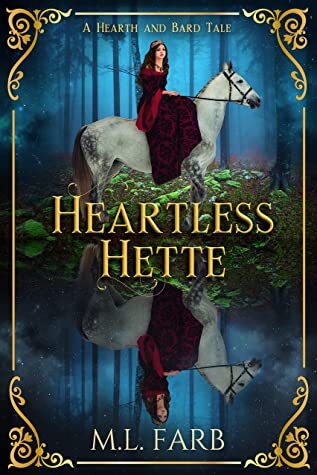
Synopsis
When Princess Hette refuses a sorcerer’s proposal, he retaliates by stealing her heart—literally.
Desperate to resist his influence, Hette makes herself emotionless, stifling all feelings until she can find her heart and win it back. Only Konrad, the despised Court Fool, knows where to find the sorcerer, and he has his own curse to battle.
Riddles and magic plague their path, including a memory stealing witch, an unbeatable knight, and a magic book that would as soon drown them as lead them to their destination. Yet, if Hette can’t find the sorcerer in time, her heart will be the least of her losses.
Jason’s Review
I didn’t think I was going to like Heartless Hette. I didn’t think I was going to finish it. And then I did…and I did. And you know what? By the end I was really glad this book ended up in my initial batch of #spfbo reads. As I write this I don’t know how much further it will get in the contest but for me at least it passed my initial round of cuts and I’m happy for my time spent with it.
I need to note something right up front because it impacted my initial and then later thoughts about the book. Heatless Hette is a twist on a fairy tale. Well, a twist on multiple fairy tales, but more on that later. I point this out for a couple of reasons. One, I’m not a huge fan of fairy tales or stories written like a fairy tale. I don’t hate them, I just don’t particularly like them or seek them out. But I thought to myself, “Hey I’ll give it a shot” even when I didn’t expect much. I’m glad I did because there was a fantastic story within those pages that warmed my heart a little.
Two, Heartless Hette is written like a fairy tale, especially in its early chapters. What I mean is that way in which action, events, and dialogue happen really quickly and seem a little forced because a fairy tale isn’t working on some deep narrative depth, but instead is driving toward some point or lesson and has to get there quick because usually they are not a novel length story. So, early on I was thinking, “this seems a little cheesy…stuff is happening way too quickly and easily.” And then I thought, “huh…maybe it’s intentional”, and I sat back and decided to go along for the ride. Once I did that the story and the characters really opened up to me and soon it read less like a true fairy tale and more like an adventure.
Hette, the Princess of Wurttemberg is an interesting character. Her heart has been literally stolen by a sorcerer and the nature of this curse (for lack of a better word) is that when she feels and shows emotion she more easily comes under his sway. So in response she has determined to use her mind to thwart her heart and retain control over herself. This becomes a distinct challenge as the story progresses because who are we as humans if we don’t have a “heart” or if we don’t show and express emotion? The other characters on the quest with Hette to find the sorcerer and win back her heart take up this challenge and it becomes a key element of the narrative, the determination to help her be her full person and to be the best ruler she can be because logic at the expense of feeling is detrimental to a future queen. This was my favorite element of the book, the quest within the quest so-to-speak, to not just take back Hette’s physical heart, but to ensure her emotional heart is strengthened and protected. As the journey progresses this theme keeps coming to the fore and we see some wonderful character development in Hette as she becomes a better person.
Heartless Hette also surprised me because when it reached the point where I thought the climax should occur (about the 50% mark) it shifted to Act III where the stakes get higher and the journey became much more difficult. I enjoyed this added depth to the narrative, how it helped explore the driving force of the antagonist, and the way it enabled me to experience and explore Hette’s character growth and development.
One aspect I wasn’t so sure about and I wondered how some readers would feel about it was the way in which Hette’s heart is stolen. The male sorcerer casts a spell on her and steals her heart as a means by which to force her to fall in love with him against her will. I know real fairy tales (I’m thinking the non-Disney versions, but often even those) have some dark tones and questionable tropes by modern standards and deserve critique. I don’t think the intention in Heartless Hette is to promote negative tropes but instead it seeks to show a strong character with a strong supporting cast overcoming evil in the world and learning valuable lessons about life and themselves in the process. That is what fairy tales are meant to do, and what Heartless Hette strives to do as well.
If you’re a fan of fairy tales you’ll find a lot to love in Heartless Hette as well because it’s sprinkled with many stories you’ll remember and some you may not know. It is itself a retelling of “The Princess Who Never Laughed” and I immediately picked up on references to “Sleeping Beauty”, “Hansel and Gretel”, and “Red Riding Hood”, but there were others I didn’t know (referenced at the end of the book if you’re curious). These tales are woven into the narrative so that they become part of Hette’s story as told by a traveling female bard in England. It’s filled with talking frogs, kobolds, magic books, and many other creatures out of childhood stories, but it isn’t a children’s story. I’d place it somewhere between YA and adult fantasy having elements of both but not solely in either camp.
Heartless Hette is actually the third book in the Hearth and Bard Tales series but you don’t have to read any of the preceding books to understand or follow along with what is happening. You can definitely pick it up and dive in without feeling you’ve missed something important.
Tyra’s Review
There is little to say that Jason hasn’t already touched upon so I’ll echo some thoughts and otherwise leave his review to stand.
Heartless Hette is a fairy tale retelling without being any one specific fairy tale but rather an amalgamation of many. This greatly enhanced my experience with it, if it had been only one fairy tale retelling I think it wouldn’t have had the depth that it does.This isn’t my typical sub-genre and I only read it because Jason put it out to the team for a second opinion. To my surprise I tore through this book, it was so readable and the plot flowed in such a spectacular fashion and soon I was staying up past bedtime to finish it off. I remember finishing this book sitting in the dark reading by kindle (I know probably not good for the eyes and all), but I realized I had less than an hour left and I just had to keep going. The plot is so simple at its core, it’s a journey of retrieval but there were twists and turns galore on their journey. The prose is simple and readable which really allows the plot to flow so quickly. At times it reads more YA than Adult but as Jason mentioned it toes the line and falls into both camps.
Overall, this one deserves to advance to semi-finalist because it will appeal to a wide audience, it’s a quick fun read that is a great journey from start to finish.
Buy from Amazon
HEARTLESS HETTE•HEARTLESS HETTE•HEARTLESS HETTE•HEARTLESS HETTE•HEARTLESS HETTE•HEARTLESS HETTE•HEARTLESS HETTE•HEARTLESS HETTE•
The post #SPFBO8 Semi-Finalist Review – Heartless Hette by M.L. Farb appeared first on BEFOREWEGOBLOG.
#SPFBO8 – Semifinalist Review – Spirits of Vengeance by Rob Hayes
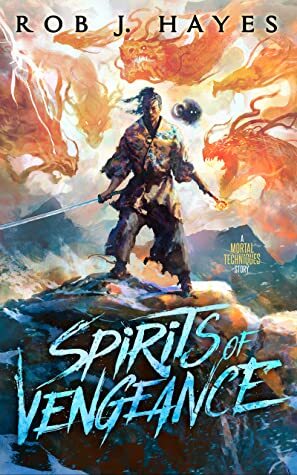 Spirits of Vengeance takes place a wonderfully realized world, populated with intricately crafted characters. As someone who lives in Japan and has married into a Japanese family, I tend to be wary of Japan-based stories as small things that may not bother the average reader can be an annoyance for me- such as cultural inaccuracies or direct translations of words. However, you can tell that Hayes did his research because the depth of the yokai lore explored in this book is very well done. There were changes made to the original stories to fit the Mortal Techniques world, but the alterations are purposeful and add a very interesting twist in most cases. The Ghibli vibes of the character Shiki were also off-the-charts and I was living for it (she is also probably my favorite character in this world thus far).
Spirits of Vengeance takes place a wonderfully realized world, populated with intricately crafted characters. As someone who lives in Japan and has married into a Japanese family, I tend to be wary of Japan-based stories as small things that may not bother the average reader can be an annoyance for me- such as cultural inaccuracies or direct translations of words. However, you can tell that Hayes did his research because the depth of the yokai lore explored in this book is very well done. There were changes made to the original stories to fit the Mortal Techniques world, but the alterations are purposeful and add a very interesting twist in most cases. The Ghibli vibes of the character Shiki were also off-the-charts and I was living for it (she is also probably my favorite character in this world thus far).
One of my favorite tropes is found family with chaotic vibes, which requires you to be very attached to the characters, and Hayes pulled that off wonderfully here. I loved our mismatched band of morally grey misfits, and I was invested in everything that happened to them. The villains were also well-developed, multi-faceted, and satisfactorily terrifying; they felt like a true threat. This was a very important factor as we spend a lot of page time in battle scenes, and we need to feel there are actual stakes to each fight. The ending felt a bit rushed to me, but that’s not enough to take away from the fun I had with the rest of the story.
I will be recommending this as a semi-finalist for SPFBO8.
Buy from Amazon
spirits of vengeance•spirits of vengeance•spirits of vengeance•spirits of vengeance•spirits of vengeance•spirits of vengeance•spirits of vengeance•spirits of vengeance•
The post #SPFBO8 – Semifinalist Review – Spirits of Vengeance by Rob Hayes appeared first on BEFOREWEGOBLOG.
October 13, 2022
#SPFB08 SEMI-FINALIST REVIEW – THE THIRTEENTH HOUR by Trudie Skies
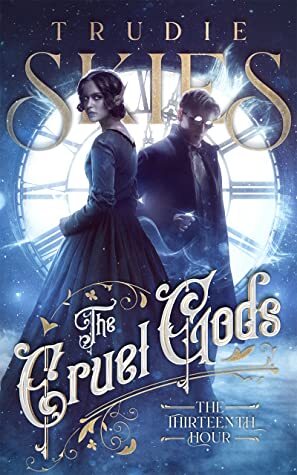 P.L. Stuart’s Review
P.L. Stuart’s Review
Full disclosure, I read and provided an honest review for this book back in February 2022, when I read it for pleasure. I have since re-read it, and my opinion of this book holds.
The following review of “The Thirteenth Hour” by Trudie Skies below is for purposes of the Self-Published Fantasy Blog-Off (SPFBO) Number 8 competition in which this book is entered, and assigned to Before We Go Blog for judging.
The setting for “The Thirteenth Hour” is the city of Chime. Chime is one of the most unique settings you are ever going to find in a fantasy novel. In this epicentre, where differing cultures converge, there are 12 human races inhabiting the city, and each of those 12 races revere their own individual god. Chime is considered a free-city, and – ironically – safe zone from the 12 gods themselves, who are essentially barred from Chime.
But the reader will soon discover the so-called free citizens of Chime are not truly free at all. If one commits any actions contrary to the will of the gods while in Chime, punishment is severe, up to and including death.
The two main characters, Kayl and Quen, could not come from more opposite parts of Chime’s society. Kayl has abandoned the gods. She is a heathen, and she wants to protect other heathens from the gods she has forsaken.
“When one god’s demand of such heavy tithes of her own mortals and punished those who couldn’t afford to pay, the poorest had no choice but to run, to seek the only city where not even the gods could tread. That’s where my organization stepped in.”
In opposition to Kayl stands people like Quen, who is one of the powerful, uber-devout enforcers working for the gods in Chime, known as Wardens. Kayl refers to Wardens as “the gods’ mortal eyes.” Wardens are chosen from the 12 diverse societies that inhabit Chime, and they prevent those various societies from clashing with each other, and ensure the societies conform to the doctrines of the gods.
As a Warden, Quen is charged with chasing sinners, and ensuring they are punished for their transgressions against the gods. But Quen is a soul tormented by his past, and by his visions. For all his righteousness, his faith just might be undermined by the very gods that he clings to, that define who and what he is.
But Quen soon becomes aware of Kayl, who appears to be more than just a Vesper (originating from the domain of Eventide, a domain of glowing mushrooms, under control of the god of autumn, called Valeria). Kayl has special powers, and Quen is determined to uncover what those powers are. Says Quen to Kayl, about his overriding goal:
“We solve the mystery of you.”
Because the fate of Chime lies in the balance, and if the gods intervene, the results will be devastating.
Any book I give high praise to will have compelling themes that give me something to think about long after I have finished the book. Skies excels here, particularly with one of my favourite themes: religion. In the case of “The Thirteenth Hour”, Skies explores why humans are so attached to the worship of deities; why various deities are worshipped by one faction as opposed to another; what are the consequences of the sins of so-called apostasy and blasphemy against one’s gods to the psyche of the “sinner”; and are the gods worthy of human veneration in the first place?
As a character-driven reader, Skies was speaking my language. The main ones, and their supporting cast, are all wonderfully complicated, damaged, and hiding stuff from each other. Coming together, initially as natural foes, for a common cause, Kayl and Quen are characters the reader will become completely invested in. The passionate Kayl is nicely contrasted to the more austere and mysterious Quen.
But the scene stealing here goes to the cruel gods. My my, are they baddies. The reader will love to hate them, and what they subject their faithful human subjects to, just for sake of eccentricity, selfishness, greed, or simply the desire to be worshiped exclusively, is horrifying.
Finally, I’ve saved perhaps the best element of this marvellous book for last: the worldbuilding. Wow! Wow! Wow! The design and concept here are examples of some of the best fantasy has to offer. It is completely beguiling, absolutely bewitching. Twelve distinct domains, ruled by twelve distinct gods, who have their own demands, agendas, desires, and use humans as pawns. These gods, as the series title indicates, and I have already alluded to, are by no means benevolent. Capricious, selfish, foreboding gods ensnaring humans in their schemes (and the humans getting wise and against impossible odds trying to fight back) is a theme that will hook me every time, and it was so well done in “The Thirteenth Hour”.
“Varen understood the cruel whims of his god. That was the one reason why he risked associating with the Godless, to help us undermine her in the few petty ways that he could.”
But I digress into themes there, we’re talking about worldbuilding.
Some domains in the novel were cities of golden cathedrals, some were tropical islands, some were treacherous jungles. Others were desert, or observatories of stars, or frozen wastelands, or sky worlds made from floating airships, and MORE. Incredible. Each domain had a designated crossing time into Chime and, with 12 realms, bringing a special meaning to the eponymous Thirteenth Hour.
Then we have Chime itself. It’s a grim place, with plenty of poverty and despair, paired along with affluence. It’s a place where “sinners” are ruthlessly pursued by Wardens, the helpless and frail humans are at the mercy of the gods’ fancies, and chaos, desperation, and fear is cloaked in a fine veneer of urbane civility. A collision between worshipers of different gods is a constant threat, calamity always looms, and things are bound to eventually get complicated, bloody, and downright scary. Rest assured, it does.
The sheer scope of this, the uniqueness, the detail, and the ingenuity involved in creating all this, vaults Skies into my top 10 worldbuilders of any authors I have ever read. The lore and backstory is rich, intricate, and helps make this book a phenomenal read for fantasy lovers.
Told in my favourite first person perspective, from predominantly Kayl and Quen’s POVs, this novel may burn slow at the start (again the way I like it) but the action builds steadily. If you are looking for major battle set-pieces, look elsewhere. But if you are looking for startling conflict in a clash of beliefs, cultures, and manipulative gods, this is your book.
This was a book I truly wanted to savour, and found myself utterly disappointed once it was over, especially due to the exceptional characters, and that sumptuous, scrumptious worldbuilding.
I am recommending that “The Thirteenth Hour” advance to the semi-finals round for Before We Go Blog’s group of assigned books for SPFBO 8.
If I consider a book a five-star read, those are the books I will be recommending to be put forward for advancement to either a quarter-final, semi-final, or final round of SPFBO within Before We Go Blog.
For “The Thirteenth Hour,” my score is 5 out of 5 stars.
Jason @ Off the TBR’s Review
You ever see a book on a bookstore shelf or posted about online and without knowing anything about it or the author just know that’s a book you want to pick up and read after the very first encounter with it? No questions or hesitations? That’s kinda rhetorical because I’m guessing most of you if you love to read have felt this sensation at least once but it’s possible you haven’t. Well, today I want to rave a little about one such book.
This feeling doesn’t occur with me very often. Usually I need to see some hype about a book or author first, and if not I go into it with some reservations. But one day back in September/October I noticed a Twitter post from Trudie Skies about their book The Thirteenth Hour which was due to be published very soon. The cover is what I noticed right away (YES I JUDGE BOOKS BY THEIR COVER). The color, the imagery, even the script/font. Just take a look below and you’ll see what I mean. I jumped over to read the blurb and was like, “yep, I’m buying this one.” Something about it just made me feel like I would love it. I hadn’t seen the first review, or anyone else hyping it yet. But I felt confident I’d like it. I waited for the paperback version to be available because I wanted one for the shelf and then waited somewhat impatiently for it to arrive. When it did I got this beauty in the mailbox…
HighlightsGaslamp fantasyPortal fantasySteampunk vibesGothic undetonesLight and funny/dark and heavyWorldbuildingThe Thirteenth Hour surpassed my expectations. And just to reiterate, I expected to love it.
I want to start by mentioning the worldbuilding. Trudie Skies has created a world made up of twelve different realms each ruled over by a different god, and populated by a unique people with powers and abilities unique to that realm. Some can hide in shadows, some can mesmerize, some can control light and fire, some can control time. Each realm exists in a pattern like a clock and at the center of them is a city called Chime which is neutral ground and where peoples of all realms can live and work. In Chime is a portal (a clock tower) that allows one to travel between realms but only twice a day, twelve hours apart, when the hand on the clock reaches that realms designated hour. Hence the portal fantasy element I note above.
Within this world and it’s realms all things and all peoples are not equal. The gods are indeed very cruel (hence the series title), and some peoples are treated as less than others. There’s oppression, abuse, and darkness. It isn’t just the gods who are cruel, but the people as well. There are have’s and have nots, and they are relegated to specific areas of the city. Worship of one’s god is expected and required and violators are punished. So when a group of “godless” hoping to address the plight of those in the undercity stirs up trouble just as a strange new threat to Chime is uncovered…well…things begin to get messy.
I hesitate to say more about the story details because I hate the idea I’ll include a spoiler. I’ll just mention what I loved about the book. The gaslamp fantasy with seampunk vibes is something I love. I don’t read a lot of this subgenre but I really tend to enjoy it. And Trudie Skies does it well. It isn’t overblown and heavy and nothing felt forced. It was dark and gritty and the mood and tone were just right.
I mention gothic undertones in my highlights section. This isn’t a gothic novel. Let me be clear about that. But, there are gothic elements imbued within it. Certain realms definitely have that feel (I’m looking at you Eventide). And while Kayl isn’t the chaste heroine of many a gothic tale she fits other elements. Again it’s not gothic by the numbers, but it isn’t grimdark or dark fantasy either. I just think gothic fits it better as a descriptor that anything else with all the associated vibes of that subgenre. And it definitely delivers on some of those themes.
The writing is also well done. The pacing is very balanced and shifts between the POV characters Kayl and Quen. Just enough is revealed each chapter to make you wonder what is going on, what will happen next, and to keep you turning those pages. Skies balances the heavy elements and tone with fun and light banter between characters. She also gives Kayl something of a childlike quality that shines through the all the darkness around the character.
But my favorite thing is the most basic thing…the story. All the other pieces serve the story well. A band of misfit “godless” who are fighting for better lives for everyone around them stir up the ire of the gods while a new threat to their world emerges. While everyone is vying to understand and get control of this threat things get out of hand and the very existence of the realms is in danger. Secrets about the characters’ past are revealed to themselves and others, and they fight to save not just their own souls and those of their friends, but the lives of everyone. Within all of this we get a story about love, and passion, and devotion that asks who deserves those things, whether required or a gift, and whether they can overcome divine powers set to control them. We get a story about faith and it’s application and focus. We get a story about living in spite of it all. Add a chunk of action and drama and you’ve got a great read.
I know I don’t gush well and I tend to be more technical than emotive in my reviews, but believe me when I say I loved this book. I hope you’ll give it a chance, and that you will love it too.
4.5/5 Stars
Buy from Amazon
The Thirteenth Hour•The Thirteenth Hour•The Thirteenth Hour•The Thirteenth Hour•The Thirteenth Hour•The Thirteenth Hour•The Thirteenth Hour•The Thirteenth Hour•
The post #SPFB08 SEMI-FINALIST REVIEW – THE THIRTEENTH HOUR by Trudie Skies appeared first on BEFOREWEGOBLOG.
October 12, 2022
SPFBO8 Review and Cut – Dragon Prey: A Cloud Lands Novella (The Cloud Lands Beginnings) by Hannah Steenbock
 What is it about?
What is it about?Set in the prehistory of the Cloud Lands world, Dragon Prey, tells the tale of how humans and dragons encountered each other for the first time. Clans of humans and their livestock are prey to ferocious firebeasts that plague the land. Life is hard and the attacks seem to be escalating. One clan, however, has a healer called Sidren, who has the unique ability to sense the emotions of dragons, and this presents a unique opportunity during one tragedy. To communicate with one of the beasts. What follows is the birth of a relationship that shall forever change the human, and dragon’s, worlds.
My Thoughts:There was a time when I would usually avoid novellas as I find it difficult to feel immersed in the world or feel that the characters don’t have enough pages to develop enough for me. But in recent years I have felt differently about them, particularly in terms of a novella being an entry point into an author’s creation. So, I chose to read Dragon Prey as one of my SPFBO entries. After finishing it, I am conflicted by my own thoughts about the book.
Hannah Steenbock has created a fascinating world, a prehistory to her other novels set in the Cloud Lands world, as I understand it. The book can be ready independently of that series as a standalone but can also treated as a prequel novel. I simultaneously found this an advantage reading this in isolation of the series as a SPFBO entry, but also wondered if I would have got more out of this story, knowing the events and world from her other novels. It presented an interesting thought process as I read this novella.
Our main protagonist, Sidren, a healer, who has a physical disability, was a wonderfully fleshed out and well written character. She came across as compassionate, intelligent, and mature and was not defined by her disability, but her motivation to save her people. I really enjoyed getting to know her. The other human character I really liked was Mynzir, who becomes an important ally to Sidren as a division fractures the clan when she starts to communicate with a dragon. I did find that the other human characters weren’t as well fleshed out, such as Rella, our human antagonist. I did feel she was rather one dimensional.
One of the strongest aspects of the novella is how the author presents and evolves the relationship between the humans and dragons. I found this a fresh take and an interesting direction to take dragons within the fantasy genre. The relationship between Sidren and the dragon Kreysha, and how it progresses, is the core element to the novella and that central relationship works well.
Hannah’s prose is fluid and easy to read, her action scenes kinetic and exciting, you can really sense the weight and speed of the dragons, particularly in the ariel scenes. My only personal criticism is that I found the characters to be a little over earnest at times. There is lots of hugging dragon’s noses and frequent exchanges of affection, that was just a little too much for me. Many others will really enjoy this aspect, but, for me, took me out of the situation at several points.
I will definitely explore the Cloud Lands through Hannah’s other books because of reading Dragon Prey, but this novella unfortunately will be a cut.
Luke Winch is a book blogger and podcaster. You can find his reviews and podcast links at lukewinch.com
Best wishes,
Luke Winch
Buy from Amazon
Dragon Prey: A Cloud Lands Novella•Dragon Prey: A Cloud Lands Novella•Dragon Prey: A Cloud Lands Novella•Dragon Prey: A Cloud Lands Novella•Dragon Prey: A Cloud Lands Novella•Dragon Prey: A Cloud Lands Novella•Dragon Prey: A Cloud Lands Novella•Dragon Prey: A Cloud Lands Novella•
The post SPFBO8 Review and Cut – Dragon Prey: A Cloud Lands Novella (The Cloud Lands Beginnings) by Hannah Steenbock appeared first on BEFOREWEGOBLOG.
October 11, 2022
First Chapter First Paragraph – A Court of Thorns and Roses by Sarah J. Maas
“Don’t feel bad for one moment about doing what brings you joy.”
Check It Out
What is A Court of Thorns and RosesAbout? When nineteen-year-old huntress Feyre kills a wolf in the woods, a terrifying creature arrives to demand retribution. Dragged to a treacherous magical land she knows about only from legends, Feyre discovers that her captor is not truly a beast, but one of the lethal, immortal faeries who once ruled her world.
At least, he’s not a beast all the time.
As she adapts to her new home, her feelings for the faerie, Tamlin, transform from icy hostility into a fiery passion that burns through every lie she’s been told about the beautiful, dangerous world of the Fae. But something is not right in the faerie lands. An ancient, wicked shadow is growing, and Feyre must find a way to stop it, or doom Tamlin—and his world—forever.
From bestselling author Sarah J. Maas comes a seductive, breathtaking book that blends romance, adventure, and faerie lore into an unforgettable read.

First Chapter, First Paragraph of A Court of Thorns and Roses
The forest had become a labyrinth of snow and ice.
I’d been monitoring the parameters of the thicket for an hour, and my vantage point in the crook of a tree branch had turned useless. The gusting wind blew thick flurries to sweep away my tracks, but buried along with them any signs of potential quarry.
Hunger had brought me farther from home than I usually risked, but winter was the hard time. The animals had pulled in, going deeper into the woods than I could follow, leaving me to pick off stragglers one by one, praying they’d last until spring. They hadn’t.
I wiped my numb fingers over my eyes, brushing away the flakes clinging to my lashes. Here there were no telltale trees stripped of bark to mark the deer’s passing—they hadn’t yet moved on. They would remain until the bark ran out, then travel north past the wolves’ territory and perhaps into the faerie lands of Prythian—where no mortals would dare go, not unless they had a death wish.
A shudder skittered down my spine at the thought, and I shoved it away, focusing on my surroundings, on the task ahead. That was all I could do, all I’d been able to do for years: focus on surviving the week, the day, the hour ahead. And now, with the snow, I’d be lucky to spot anything—especially from my position up in the tree, scarcely able to see fifteen feet ahead. Stifling a groan as my stiff limbs protested at the movement, I unstrung my bow before easing off the tree.
First Chapter, First Paragraph -; Cryptofauna by Patrick Canning
The post First Chapter First Paragraph – A Court of Thorns and Roses by Sarah J. Maas appeared first on BEFOREWEGOBLOG.
Review – The Auxiliary: London 2039 by Jon Richter
 THE AUXILIARY: LONDON 2039 is a dark, seedy, and depressing story about a cyberpunk future as well as a broken/damaged detective investigating a murder. The thing is that I’m not actually complaining about these things. I am going to give The Auxiliary incredibly high praise for the fact that it is actually one of the few cyberpunk books that manages to succeed in matching the darkness of its source material.
THE AUXILIARY: LONDON 2039 is a dark, seedy, and depressing story about a cyberpunk future as well as a broken/damaged detective investigating a murder. The thing is that I’m not actually complaining about these things. I am going to give The Auxiliary incredibly high praise for the fact that it is actually one of the few cyberpunk books that manages to succeed in matching the darkness of its source material.
Carl Dremmler is a fantastic character that actually is every bit the sad, pathetic man that audiences kept forgetting Rick Deckard was because he was played by Harrison Ford. No, Deckard is a scumbag who murders people he knows to be innocent thinking beings because it would be inconvenient to resist the police shaking him down.
While I’m not going to say Jon Richter manages to match Phillip K. Dick’s even more despicable version of Deckard from DO ANDROIDS DREAM OF ELECTRIC SHEEP, there’s being a really good boxer and boxing with Ali, but he manages to go the extra mile in creating someone who really is lost in the noir haze of his world without hitting, “I am a protagonist of detective fiction.” Which is to say Carl Dremmler is believably sad and pathetic as a bachelor who lives alone in his apartment with his sex bot and terrified of the outside world that has left the majority of humanity behind.
The Auxiliary’s premise is London has been all but taken over by an integrated AI that now handles the entirety of the internet as well as everything linked to it. TIM AKA The Imagination Machine is supposedly not sentient but handles drone deliveries, electric cars, and all of your media preferences ranging from Rage Against the Machine to the latest K-Pop. I think 2039 is a bit too early but I’d state that the world is a somewhat believable one for 2069. In any case, I’m hardly one to complain since my favorite cyberpunk movie, Johnny Mnemonic, was set in the far off year of 2021.
Carl hates his job and has the somewhat cliche excuse of a dead child to explain why he’s lost in a bitter self-destructive spiral of depression but this is the only misstep I think in an otherwise incredibly strong narrative. The case is also suitably intriguing where a man’s cybernetic arm apparently murders his wife of its own accord. Can TIM be hacked? If so, does that present an existential threat to London’s economy as well as way of life.
Is it grimdark? Yes, I’d actually say it very much is. Like Deckard’s literary counterpart and his movie one to a lesser extent, Dremmler has a darkness to him and is primarily motivated by his grievances versus any real sense of justice. The world is corrupt, self-serving, and at times actually nasty. He’s frustrated both sexually and well as emotionally, which leads him to lash out with violence. However, the culture that surrounds him is so harsh that you want him to succeed against the forces arrayed against him.
There’s layers of corporate conspiracy, paranoia, religious fundamentalists, 3D printed bugs, assassinations, and other weirdness that works excellent for this story. The ending is also incredibly powerful and unexpected. I strongly recommend this story and think people who like dark, gritty, and dangerous sci-fi will enjoy it.
Buy from Amazon
The Auxiliary: London 2039•The Auxiliary: London 2039•The Auxiliary: London 2039•The Auxiliary: London 2039•The Auxiliary: London 2039•The Auxiliary: London 2039•The Auxiliary: London 2039•The Auxiliary: London 2039•
The post Review – The Auxiliary: London 2039 by Jon Richter appeared first on BEFOREWEGOBLOG.
October 10, 2022
Fighting Woman Flying High in The Night Witches by Garth Ennis, Russ Braun (Illustrations)
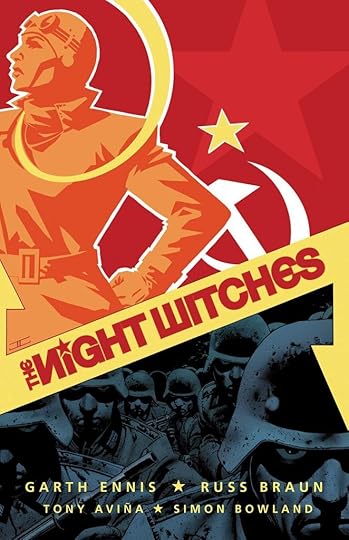
“You know what it’s like when a P.O.-2 comes along, if you’re on the ground you can hear it for miles, that pop-pop-popping the engine makes… Two more missions like that and we’ll all be done with, unless we can magically stop them from hearing us coming.”

As the German Army smashes deep into Soviet Russia and the defenders of the Motherland retreat in disarray a unique new squadron arrives at a Russian forward airbase. Like all night bomber units they will risk fiery death flying obsolete biplanes against the invader–but unlike the rest these pilots and navigators are women. In the lethal skies of the Eastern front they will become a legend–known to friend and foe alike as The Night Witches.With casualties mounting and the conflict devouring more and more of her comrades Lieutenant Anna Kharkova quickly grows from a naive teenager to a hardened combat veteran. The Nazi foe is bad enough but the dreadful power of her country’s secret police makes death in battle almost preferable. Badly wounded and exiled from her own people Anna begins an odyssey that will take her from the killing fields of the Second World War to the horrific Soviet punishment camps–and at the top of the world high above the freezing Arctic Ocean the Night Witch finds she has one last card to play.
MY THOUGHTSWomen’s roles in war are always played down or seen as insignificant. Even though, often, women played a huge role in major battles or information gathering. During world war II, women took over major industrial roles typical staffed by men. Women built ships, armaments, and trucks. They took over massive equipment operation, and difficult hard labor. For the US, women staffed over 400,000 support staff positions assisting in the war effort of US militaries. They are essential, but often their stories are not told. Enter Garth Ennis of Preacher and The Boys fame. Plus, about twenty other as great series. He is known for his deep storytelling, and no holds barred dialog. Pretty much anything goes when it comes to an Ennis novel. This is an important point to bring up because The Night Witches is based on a real squadron of female fighter pilots during World War II. Ennis had to mix his gritty storytelling and balance it against any accurate details he can glean from actual true-life events. Ennis quotes John Keegan’s shocking dismissal of women as fighter pilots or even as fighters in general with “‘Warfare is … the one human activity from which women, with the most insignificant exceptions, have always and everywhere stood apart … [women] never, in any military sense, fight men.'”[1] Little is known specifically about The Night Witches, the soviet government has set to downplay its reliance on female personnel. But much can be guessed from the few personal histories that survived.
In response, Ennis has created a character that is a composite of the available information about female fighters at the time in the form of Anna Kharkova[1]. The premise of the story is disjointed, and I found it challenging to follow, but loosely it is about a group of women, named The Night Witches or Ночные ведьмы or in German, die Nachthexen. (The Germans dubbed them their moniker.) They flew nighttime bombing raids and supported Russian defense and offense. Anna flies everywhere and in all sorts of battles. She has love affairs, loses friends, kills people, and as the story progresses, you can tell that little bits of her soul dies. I think that it is the chaotic and disjointed nature of the story that makes it confusing. I liked Anna as a character, I enjoyed her fierce nature, and even though she is tiny, she is big in life and personality. Those who seek to underestimate her, do it only once. But I did not connect with her as a character except the little snippets of dialog that resonated with me.
Graphically, Russ Braun and Tony Aviña’s artwork shine. It is gorgeously done with massive air gun battles and vivid war scenes. The artwork is almost reminiscent of World War 2 recruitment and propaganda posters. You feel like you are there in the scenes.
This story is a hard one to judge because, on the one hand, the artwork and war scenes are some of the best I have read. Snippets and vignettes of Anna’s trials as a fighter pilot and on into POW camps are poignant and masterfully done. But as a whole, the story is too disjointed for me to care about Anna genuinely. Or understand the gravity of her actions at the end. I recommend it for the artwork and because it is Ennis because even bad Ennis is still a cut above most other storytellers, but I don’t think this is his best work.
[1] https://www.npr.org/2019/03/16/698736932/night-witches-sheds-some-light-on-daring-female-flyersOther Reviews of Note‘Night Witches’ Sheds Some Light On Daring Female Flyers

I reviewed a digital copy of this from Eidelweis in exchange for my open and honest review.
IF YOU LIKE THIS, READ THESEHis entire Preacher series is amazing. Check it out, as well as the TV adaption of it. Well worth the watch.
The post Fighting Woman Flying High in The Night Witches by Garth Ennis, Russ Braun (Illustrations) appeared first on BEFOREWEGOBLOG.
SIX ELEMENTALS AUTHOR INTERVIEW WITH J.D. EVANS

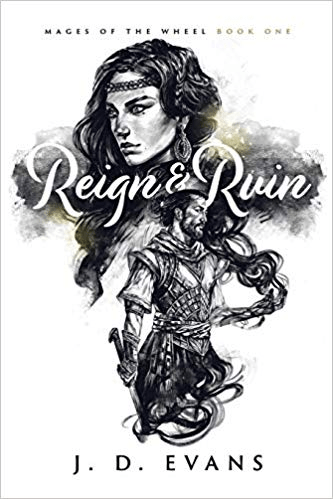
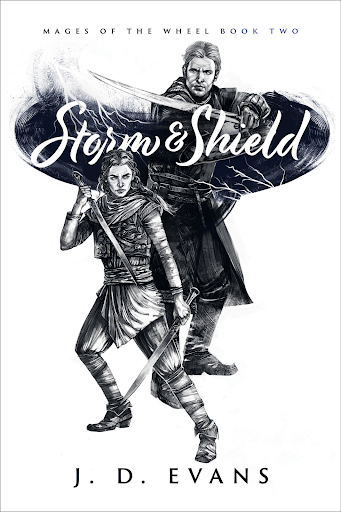
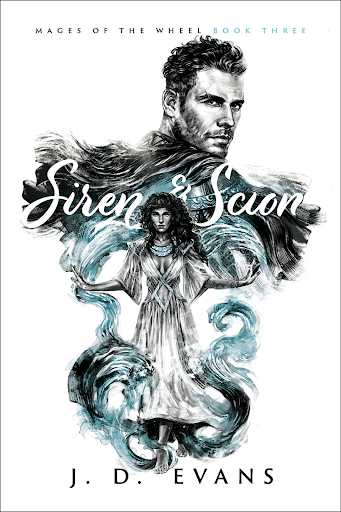
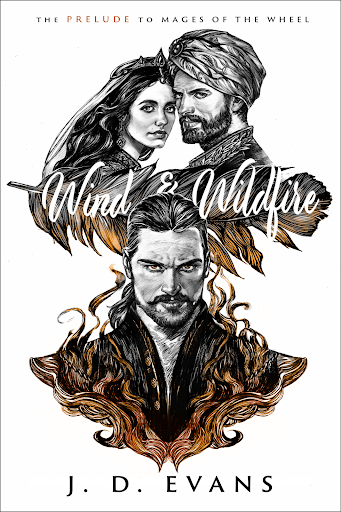
Six Elementals Author Interviews will introduce prospective readers to some of the best writers in their genre you may, or may not, have heard of, via a series of six questions. I encourage you to check out the work of these phenomenal creatives! Links to their websites and purchase links will always appear, accompanying the interview. Check them out!
I am extremely pleased to be joined for this interview by an incredible author of epic romantic-fantasy, the reigning Self-Published Fantasy Blog-Off Champion (SPFBO), J.D. Evans! J.D’s currently published works include: Reign & Ruin, Storm & Shield; Siren & Scion, and Wind & Wildfire.
 P.L.: Such pleasure to be able to interview you, J.D.! Welcome to Six Elementals Interviews! And congratulations on the HUGE SPFBO Win! I truly enjoyed your award-winning book, Reign and Ruin! Can you tell us please, what was your SPFBO experience like? Now that you are a few months removed from your victory, with the new contest underway (SPFBO8), and you can perhaps sit back and reflect on how things went for you with a different perspective than the one you had while you were in the thick of things? What do you think?
P.L.: Such pleasure to be able to interview you, J.D.! Welcome to Six Elementals Interviews! And congratulations on the HUGE SPFBO Win! I truly enjoyed your award-winning book, Reign and Ruin! Can you tell us please, what was your SPFBO experience like? Now that you are a few months removed from your victory, with the new contest underway (SPFBO8), and you can perhaps sit back and reflect on how things went for you with a different perspective than the one you had while you were in the thick of things? What do you think?
J.D.: Thank you so much for the opportunity! SPFBO was a wild ride. I was certain I would get cut in the first round, because I went in sure that they leaned heavily toward epic/classic fantasy and grimdark. So I just kept getting surprised. And to be honest, I was not prepared for the stress. You know, you throw your book into a contest thinking you’ll be out in round one, that means you’ll be done with the stress right away. Instead it dragged on for a year, and ramped up. But everyone was so amazing. So supportive and kind. And the friendships that you form with the other finalists are, to me, where the real value is. Also the blogs and reviewers probably need a vacation. I honestly don’t know how you guys do it.
P.L.: How has being an SPFBO contestant, and one of only seven winners in the world to-date, impacted you personally and professionally (with your writing career)?
J.D.: There was definitely a short term boost in sales. My community on social media has grown a bit, mostly with indie authors. Podium contacted me because of the win, wanting to do the audiobooks. That was really exciting, because I wasn’t able to afford to do audiobooks on my own. As far as writing…it’s about the same. You know, they start right back into the next contest right away, so there isn’t a lot of basking.
P.L.: Reign and Ruin winning SPFBO seems to have smashed the theory in some circles that fantasy-romance is not as popular a sub-genre of the broader fantasy sphere. If one accepts the notion that fantasy-romance seems to have a lot of detractors amongst mainstream epic fantasy readers, why do you think that is? Has that changed? Has it become more in vogue, or popular now, as evidenced by two fantasy-romance books (yours and Krystle Mata’s fantastic Legacy of
the Brightwash) finishing first and second respectively in SPFBO?
J.D.: Fantasy romance has always been around in the greater fantasy sphere, it just wasn’t called that. Juliet Marillier, Jacqueline Carey, Mercedes Lackey, Kate Elliot, the list goes on, wrote books with strong romantic plots within the greater fantasy story. I don’t know if it is in vogue, so much as it is now its Own Thing. You can say, “I read Fantasy Romance”, and books are unashamedly labeled and sold as That. Instead of having to hunt the fantasy shelves for a book that might have a romance in it, you can now easily find books within the category. I think we owe a lot of that to the rise of social media – Bookstagram, booktok, etc, and frankly, to Sarah J Maas. She had this large following in the YA book community, who were on social media and talking up their books, creating online book communities. Then she published A Court of Thorns and Roses, initially as a young adult book (spoiler: it is not YA-it is adult fantasy romance) and dragged that audience into the adult fantasy sphere, and their vocal support of “this fantasy and romance mix? Give me ALL of this” really exploded fantasy romance into its own thing. The only circle that thinks fantasy romance isn’t popular is people that don’t read fantasy romance. If one takes a moment to look up from their legacy fantasy, they will see that romance accounts for nearly 2/3rds of the book market. Romance readers are voracious, loyal, and vocal. As far as WHY there are detractors, I’m going to go full feminist on this one. Please put on your safety goggles.
1) Romance is considered a “woman” thing. It is often associated with sad, dissatisfied housewives that want to ooo and aaa over chesty covers. Therefore, it is Silly, and patently Not Fantasy Worthy, which is Serious. Body parts are lopped off and dragons burn women and children, unless they are Women that Aren’t Like Other Girls, and the
only chesty men are covered in plate and their lack of emotions, except Righteous Anger…Which is Not an Emotion. Romance centers and equalizes the feminine experience (and now, even more experiences than just hetero!!!!), it turns them into arbiters of their own fates, not plot devices to spur a Plated, Angry but Not Emotional Hero to victory over the Great Bad. It highlights things western society thinks are
Weaknesses (emotions, I’m talking about emotions), having adult conversations, making compromises, and compassion.
2) Fantasy romance is primarily written by women. And women authors in Traditional publishing are still FREQUENTLY published under the label of young adult. That means that a lot of traditionally published fantasy romance is labeled YA, which therefore means its “juvenile” and not Real Fantasy.
3) Fantasy is a broad genre. It encompasses so much that things can get polarizing very quickly. A fairy tale retelling is fantasy, and so is Game of Thrones. They have nothing in common, except maybe a Medieval setting. So its easy to stand on your side and point
around and say what is and isn’t fantasy to you. But that’s the thing about fantasy that I love. There is fantasy for everyone. Any flavor you like. Any subject you can imagine. And they are ALL fantasy.
4) People who do not understand romance think it is about the sex. And certainly, it can be, and there is nothing wrong with that. But the middle ground of romance is not the sex, any more than epic fantasy is the violence. Romance is about the emotional journey. It is the connection. Two people who see each other, accept each other, flaws and all. And in fantasy romance, those love stories can be of epic proportions.
P.L.: Are you able to let us in on what projects you are currently working on? What is in your future writing plans?
J.D.: Reign & Ruin was book one in a six book series, three of which are published, along with a prequel. I’m working on book four, Ice & Ivy. There will be two additional stories in the collection, though they will be separate from the original six.
P.L.: Can you give those readers, who are not aware of your wonderful books, a bit of an elevator pitch as to why they should read your writing?
J.D.: I write epic fantasy romance in an Ottoman inspired setting. The fantasy plot carries through all the books, but each romance is a standalone (different couple) who all come together to save the world (we hope). Elemental magic, beta heroes, intelligent, capable heroines.
P.L.: I understand you were in the military. I truly respect your service, kudos to you in serving your country. How has your time serving your country influenced your writing?
J.D.: I served primarily in the Middle East: Iraq, Lebanon, Jordan, Kuwait, Qatar. So obviously it inspired my setting. The sexism I dealt with certainly influenced the trials I put my female characters through. I think I have an intimate understanding of war. How it isn’t black and white, what it feels like to lose friends violently and suddenly. I was a military intelligence officer first, and then transitioned to special operations. So I studied a lot about insurgency, which I haven’t used yet, but probably will.
P.L.: Thank you so much J.D. for being willing to be interviewed! I truly appreciate it!
J.D.: Thanks again for the opportunity!
Read Our Review of Reign & Ruin
Buy Wind & Wildfire here
Buy Reign & Ruin here
Buy Storm & Shield here
Buy Siren & Scion here
J.D. Evan's FacebookJ.D. Evan's TwitterJ.D. Evan's InstagramJ.D. Evan's TikTok
The post SIX ELEMENTALS AUTHOR INTERVIEW WITH J.D. EVANS appeared first on BEFOREWEGOBLOG.
HOUSE OF THE DRAGON 1×08 “THE LORD OF THE TIDES”
 HOUSE OF THE DRAGON 1×08 “THE LORD OF THE TIDES” is one of the biggest episodes in the series and it’s interesting because it is one of the quieter ones. While there’s yet another unnecessary time skip, it carries over from the previous episode’s development so I’m able to ignore it.
HOUSE OF THE DRAGON 1×08 “THE LORD OF THE TIDES” is one of the biggest episodes in the series and it’s interesting because it is one of the quieter ones. While there’s yet another unnecessary time skip, it carries over from the previous episode’s development so I’m able to ignore it.
It is a powerful episode with a lot of character development as well as culmination of several important plot arcs. I wouldn’t say it’s my favorite of the episodes but it is strong enough that I am going to say the show has bounced back from several issues it had previously been suffering due to the constant barrelling forward without pausing to analyze previous characterization.
The premise is Ser Vaemond Velaryon, brother of Corlys, is making a play to become Lord of Driftmark. Corlys has gotten himself severely injured fighting in the Stepstones and this is understandable since the guy has to be, in-universe, in his sixties at the very least. Vaemond also has the point that the official heirs of Driftmark are, in fact, Rhaenyra’s bastards with no Velaryon blood in their veins. It should be noted by my pendantic Westerosi scholar heart, though, that he’s still not the heir but Daemon’s daughters as female children come before uncles in the Andal tradition.
 Ser Vaemond has an ace in the hole to forward his claim because he is going to be taking it before Ser Otto Hightower as he’s acting as regent for the dying bedridden King Viserys. Given Otto wants more than anything to disinherit Rhaenyra and her heirs, it seems like a slam dunk. Unfortunately, for Otto, Rhaenyra is warned about his treacherous plan and heads to King’s Landing where the Hightowers are hiding behind religion as well as have attempted to remove all of her supporters.
Ser Vaemond has an ace in the hole to forward his claim because he is going to be taking it before Ser Otto Hightower as he’s acting as regent for the dying bedridden King Viserys. Given Otto wants more than anything to disinherit Rhaenyra and her heirs, it seems like a slam dunk. Unfortunately, for Otto, Rhaenyra is warned about his treacherous plan and heads to King’s Landing where the Hightowers are hiding behind religion as well as have attempted to remove all of her supporters.
Alicent also has an interesting balance between being her darker ruthless side with her nicer more mothering side. Some of the things she does are unforgivable like the fact she covers up for her son’s rape in what I’m sure is meant to be an invocation of several other mothers doing the same for afluent white kids in today’s society. She also attempts to reconcile with Rhaenyra after one last tragic plea by Viserys before it is all ruined by a misunderstanding.
Speaking of Viserys, Paddy Considine is the MVP of the episode with his best performance yet. He really deserves a Emmy nod if not the actual award. Using the very last of his life, he manages to thwart the Hightower’s attempt to seize power. He may not have been a good king but he was a good man (ignoring the whole killing his wife during childbirth thing). He finally dies at the end of the episode but it was after his best act of kingsmanship.
 I also have to give credit for the establishing of the stakes between the sons of Alicent Hightower with the sons of Rhaenyra. Some people complain about the fact that the Blacks are being shown to be superior morally while the Greens are shown to be monsters. You know? I have no problem with that whatsoever. The Greens were scum in the books and the Blacks were far more likable, the show is just following suit.
I also have to give credit for the establishing of the stakes between the sons of Alicent Hightower with the sons of Rhaenyra. Some people complain about the fact that the Blacks are being shown to be superior morally while the Greens are shown to be monsters. You know? I have no problem with that whatsoever. The Greens were scum in the books and the Blacks were far more likable, the show is just following suit.
I do have an issue with the fact that Viserys’ last words seem to be what gets Alicent to decide on betraying Rhaenyra to crown her son. But not much of an issue as I don’t think that she would have honored Viserys’ wishes anyway. She’s spent twenty years grasping for power and trying to think she was justified in the process. People make too much of the misunderstanding when Alicent clearly was ignoring he was out of his mind. All she wanted was some sort of sign that he wanted Aegon to be on the throne and would have interpreted anything her way (which she did).
In conclusion, solid episode and I am very excited for next week.
House of the dragon•House of the dragon•House of the dragon•House of the dragon•House of the dragon•House of the dragon•House of the dragon•House of the dragon•
The post HOUSE OF THE DRAGON 1×08 “THE LORD OF THE TIDES” appeared first on BEFOREWEGOBLOG.
October 8, 2022
Review – TRIALS OF FIRE AND REBIRTH by Edith Pawlicki
 One of the most poignant books I have read so far this year, “Trials of Fire and Re-Birth” by Edith Pawlicki is a beautiful, enrapturing Asian-inspired fantasy novel about love, loss, gods, faith, reincarnation, body dysphoria, gender, and ultimately, hope. I was truly moved by this book, and so happy I read it!
One of the most poignant books I have read so far this year, “Trials of Fire and Re-Birth” by Edith Pawlicki is a beautiful, enrapturing Asian-inspired fantasy novel about love, loss, gods, faith, reincarnation, body dysphoria, gender, and ultimately, hope. I was truly moved by this book, and so happy I read it!
The story is focused on two main characters, An Ning and Karana. An Ning awakens after disaster strikes a small village called Xiling, in the body of a man. This is extremely disturbing to her, since, to the best of her recollections, she has always been a woman. Still, for the most part, her memory is foggy. Intervening to help save some courtesans who are being bullied by a mob who believe the courtesans are partly to blame for the disaster of Xiling being burned, An Ning moves on to travel with them, and other refugees trying to start anew in the aftermath of the catastrophe.
She eventually discovers, with the help of a particular courtesan who has befriended her, that she has god-like powers, and uses them to help feed her companions. This act causes the refugees to venerate An Ning as a god. It is proven in time that An Ning is indeed a powerful immortal being. In time she establishes her own following, and for centuries going forward is worshiped as a god called Peace Bringer, though she is a very minor deity in the hierarchy of the gods.
One who is not minor in the pecking order of the gods is the God of Destruction, Karana. Karana has lots of family drama, in the main court of the top gods. At one time, he was an exile from the grand court. In addition to this, he is weary of his long life, especially the loss of his many mortal lovers over the centuries.
Moreover, he is not particularly enamoured with being a god in the first place, and is haunted by his turbulent past. Yet the other gods won’t let him shirk his responsibilities, and demand he get to the bottom of a cult that murders women, tied to worship of Karana himself. Karana’s further inquiry into the cult leads him to the village where An Ning is the ruling deity.
A mutual attraction blooms, though Karana has never been drawn to men before, and An Ning had previously believed she was asexual, since she had never wanted either man or woman before meeting Karana. Were these two powerful beings destined to be together all along? Or will their differences, insecurities, and past traumas inevitably keep them apart?
This book may only have been approximately 300 pages, but the character work accomplished in this relatively small page count is astounding. The complexities of both main characters, and the situations they find themselves in, are vividly brought to life. An Ning, who is kind, noble, and benevolent at her core, is troubled by feeling like she is in a body that she does not belong in.
Encountering Karana, and her feelings for him, only compound this issue for her. As An Ning begins to unravel the mysteries that surround her awakening in the ash of the burned village, and how those mysteries are intertwined with the man she loves, we the readers see her courage, fralities, and confusion laid bare.
While there are a lot more shades of grey to Karana, I believe the reader will come to appreciate and admire him, as An Ning loves him, for the inner good that composes his fundamental make-up. Karana can be terrifying, unrepentantly vengeful, and in his blind desire for revenge, obtuse, at times, as the God of Destruction.
But overall he is a good person, and a very sympathetic character that I truly enjoyed reading about. The stories of his lost loves, the inevitability of a god who stays eternally youthful never being able to have lasting (by immortal standards) relationships with mortals whose life spans are destined to be short, makes the reader feel empathy towards Karana.
The auxiliary characters are wonderful. Chika, Akemi, and Miho, the Sea Dragon’s granddaughters, and faithful disciples of An Ning, stole my heart. Bai’s sarcasm and wit as the smartest person (God) in the room, Guleum as a compelling villain, and the compassionate, sensitive yet all-powerful Threefold Goddess, were fantastic additions to the many interesting and diverse characters that populate the pages of “Trials of Fire and Re-Birth”.
The worldbuilding is excellent, lush, Asian-inspired. Pawlick’s world comes replete with blood-thirsty creatures like the Xuezei, palaces contained within magic domes of air or suspended in heaven by the will of the gods alone, immortals, spontaneously formed from…well anything, capricious gods, my favourite, the Bulgae which are are immortal creatures that resemble dogs but made of fire, and so many more amazing characteristics.
There is a rich and colourful history and backstory of many millenia, poetry, gorgeous maps, illustrations, timelines, and family trees interspersed THROUGHOUT the novel at just the right reading juncture (as opposed to at the beginning of the novel or as appendices) that really enhance the reading experience.
There is a glossary of names and places at the end of the book as well. A great magic system, including teleportation, and lots of mystery and ambiguity (which I like) around the extent of powers of the gods (who are not completely invulnerable, and can be killed), was icing on the cake to the incredible worldbuilding.
There are numerous time-line jumps, as the long life of the gods warrants a lot of flashbacks, but there are always notations at the beginning of these jumps two help keep things straight for the reader. But be warned: be prepared for them, or one might find oneself confused.
The themes in this book are heavy, but extremely thought-provoking and well handled. Sexual assault, molestation, homophobia, transphobia, racism, suicide, infanticide, and mental health are all integral in the book, and while Pawlicki does not depict them graphically, she does not shy away from them either. At the heart of the love story between Karana and An Ning, is An Ning’s gender, how she sees herself, how others see her, and how she WANTS to be seen.
An Ning presents as a male for much of the book, though she identifies and refers to herself – and is referred to by the author – with female pronouns, while other characters refer to her with male pronouns. In the world of “Trials of Fire and Re-Birth”, homophobia and transphobia does exist, and adds inner turmoil for An Ning.
Because of that kind of bigotry, additional angst about her feelings towards Karana arises. But this is an extremely gender and sex-positive book, and the adroit and sensitive way in which Pawlicki deals with these issues is highly commendable.
There are some great action sequences in the book. Again, in terms of the author’s descriptions, it’s less about being explicit (as with the themes I alluded to above), but more about being emotive with these scenes. After reading these scenes, they feel reminiscent of classic Kung fu & martial arts movies, in terms of the ability to capture the immensity of the moment, though the choreography of the actual fight is not as detailed as those movies, if they were translated to book form.
My minor quibble with this incredible book is that some of the modern colloquialisms seemed a bit at odds with the type of tale written. Yet on a whole the prose was very good, sharp, clear, and at times, quite poetic, with some absolute gems of quotable lines sprinkled throughout the book.
This book definitely moved me, and the beautiful love story, great worldbuilding, engrossing themes, and tales within tales was just my jam.
A relatively short book that packs a huge wallop, easily five stars for “Trials of Fire and Re-Birth” by Edith Pawlicki. Loved this one!
Buy from Amazon
trials of fire and rebirth•trials of fire and rebirth•trials of fire and rebirth•trials of fire and rebirth•trials of fire and rebirth•trials of fire and rebirth•trials of fire and rebirth•trials of fire and rebirth•
The post Review – TRIALS OF FIRE AND REBIRTH by Edith Pawlicki appeared first on BEFOREWEGOBLOG.



